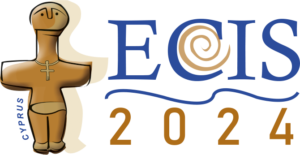Paper Number
1937
Paper Type
Complete Research Paper
Abstract
With artificial intelligence (AI) systems increasingly augmenting users, it becomes crucial to comprehend how AI systems are developed for effective human-AI augmentation. Developing an AI system needs to consider its unique agentic, probabilistic, and self-learning properties that represent a paradigm shift from the rule-based programmed code, which is subject of traditional information systems development (ISD). We draw on a dual lens of agentic IS artifacts and cognitive fit to explore the human-AI interactions during development. Our findings suggest that the data science team plays a critical role in shaping human-AI augmentation by enacting the core alignment mechanisms “aligning the agentic IS artifact” and “aligning the user mental representation”. We found that human-AI augmentation is not pre-defined, but rather an emergent property of the triadic interaction between users, the data science team, and the AI system supported by the identified alignment mechanisms.
Recommended Citation
Wu-Gehbauer, Mei and Rosenkranz, Christoph, "Towards a Framework for Developing Artificial Intelligence Systems for Human-Artificial Intelligence Augmentation" (2024). ECIS 2024 Proceedings. 3.
https://aisel.aisnet.org/ecis2024/track06_humanaicollab/track06_humanaicollab/3
Towards a Framework for Developing Artificial Intelligence Systems for Human-Artificial Intelligence Augmentation
With artificial intelligence (AI) systems increasingly augmenting users, it becomes crucial to comprehend how AI systems are developed for effective human-AI augmentation. Developing an AI system needs to consider its unique agentic, probabilistic, and self-learning properties that represent a paradigm shift from the rule-based programmed code, which is subject of traditional information systems development (ISD). We draw on a dual lens of agentic IS artifacts and cognitive fit to explore the human-AI interactions during development. Our findings suggest that the data science team plays a critical role in shaping human-AI augmentation by enacting the core alignment mechanisms “aligning the agentic IS artifact” and “aligning the user mental representation”. We found that human-AI augmentation is not pre-defined, but rather an emergent property of the triadic interaction between users, the data science team, and the AI system supported by the identified alignment mechanisms.
When commenting on articles, please be friendly, welcoming, respectful and abide by the AIS eLibrary Discussion Thread Code of Conduct posted here.


